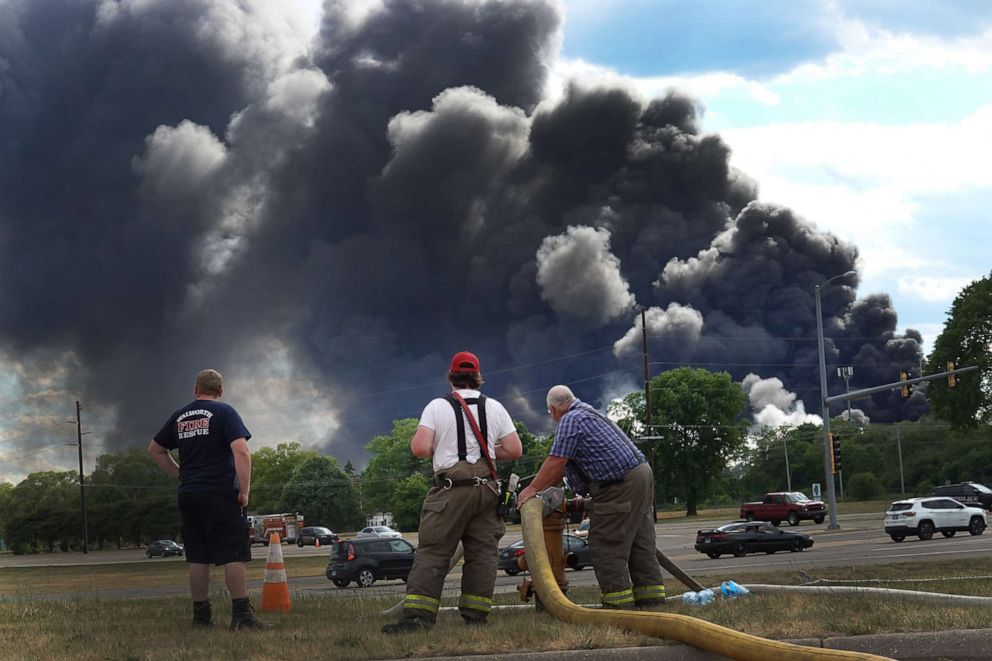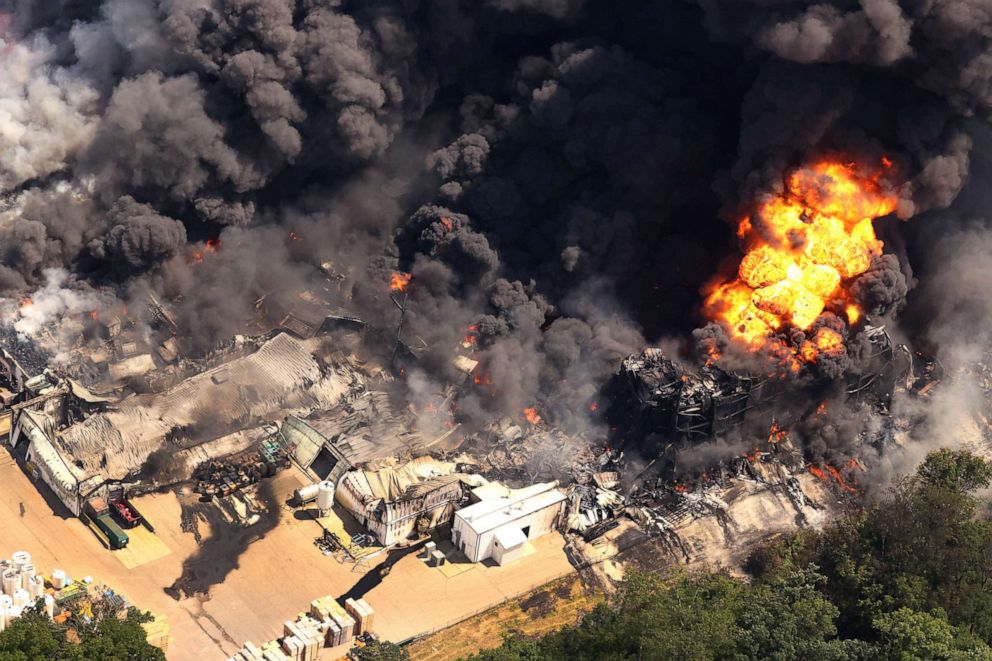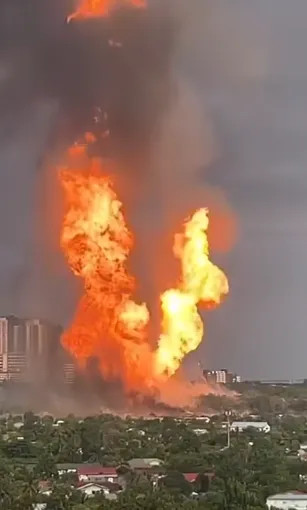Massive Fire Erupts at Chemtool Inc. Chemical Plant: Community Impact and Response
A catastrophic event unfolded in Rockton, Illinois, as a massive fire broke out at the Chemtool Inc. chemical plant, leading to the evacuation of more than 125 homes and businesses. The incident, which began following a significant explosion, has raised serious concerns about safety protocols and emergency response in industrial settings. The fire has now been raging for over 24 hours, prompting emergency services to take immediate action to protect both residents and the surrounding environment. As the flames continue to engulf the facility, it has transformed into a scene of chaos and urgency, highlighting the vulnerabilities inherent in chemical manufacturing operations.
Evacuations and Immediate Safety Measures
In response to the explosion and subsequent fire, officials mandated the evacuation of all structures within a one-mile radius of the plant. This precautionary measure aimed to safeguard the community from potential hazardous materials that could be released during the incident. Fortunately, all 70 employees present at the site at the time of the explosion were able to evacuate safely, with only two firefighters sustaining minor injuries while fighting the flames. The rapid response from local authorities was critical in ensuring that no lives were lost, underlining the importance of having emergency plans in place for industrial accidents.

Firefighting Efforts and Environmental Concerns
The Rockton Fire Protection District has been leading the firefighting operations. Chief Kirk Wilson described the situation as a “large-scale operation,” highlighting the complexity and challenges involved in controlling such a significant fire. The decision was made to allow approximately 500,000 gallons of oil to burn rather than use water to extinguish it, as there were concerns that runoff could contaminate the nearby Rock River. This strategic decision reflects a keen awareness of the potential environmental impacts, emphasizing the need for careful consideration when addressing industrial fires. The choice to let the oil burn highlights a dilemma that firefighters often face: balancing immediate fire suppression with long-term environmental protection. To mitigate environmental risks, specialized teams trained in handling industrial fires set up barriers to protect water sources and used fire-retardant foam to suppress the blaze effectively. Dr. Sandra Martell, the public health administrator for Winnebago County, emphasized the commitment to not only extinguishing the fire but also protecting air and water quality for the long term. “We are doing everything we can to both suppress the fire, protect our air quality, and protect our water quality for the long haul,” she assured the public. This proactive approach is essential for maintaining community trust and ensuring public safety amidst such a challenging situation.
Community Impact and Corporate Responsibility
As the fire continued to burn, officials have advised residents within a three-mile radius to wear masks when outdoors due to the potential for air pollution. This public health advisory underscores the far-reaching impact that industrial accidents can have on local communities. As testing for air and water quality remains ongoing, community members are understandably anxious about the implications of these hazardous incidents. Reports of respiratory issues and other health concerns have surfaced, prompting local health officials to monitor the situation closely. Bob Snyder, the vice president of operations for Chemtool’s parent company, Lubrizol Corporation, addressed the media, expressing deep concern for affected residents and pledging the company’s support in both emergency response and subsequent cleanup efforts. This corporate acknowledgment of responsibility is crucial in fostering a sense of accountability and support for the impacted community.

Investigations Underway
In the wake of this tragic incident, the U.S. Department of Labor has confirmed that inspectors from the Occupational Health and Safety Administration (OSHA) were present at Chemtool Inc. prior to the explosion. Following the event, OSHA has opened a new investigation to determine the cause of the explosion and fire. As per their protocol, no additional details regarding ongoing investigations will be disclosed until all assessments have been completed. This scrutiny is vital for ensuring that similar tragedies do not occur in the future. The outcomes of these investigations will likely shed light on potential regulatory failures and the need for enhanced safety measures across the chemical manufacturing industry.
Conclusion: A Call for Accountability and Future Safety
This incident at Chemtool Inc. serves as a stark reminder of the potential dangers associated with chemical manufacturing and the importance of stringent safety regulations. As first responders continue to combat the blaze and assess damages, the affected community is left grappling with uncertainty. Residents are calling for a thorough examination of the safety protocols in place at Chemtool and similar facilities, urging that accountability be prioritized to prevent future incidents. It is critical that both governmental and corporate entities prioritize safety and accountability to prevent such disasters in the future. With investigations underway, residents and local officials alike are calling for transparency and comprehensive measures to ensure that safety protocols are not merely in place, but actively enforced. Moreover, community engagement in safety practices is essential. Local forums and discussions can facilitate better understanding between residents and industrial entities, fostering a culture of safety that extends beyond compliance to proactive measures. The aftermath of this fire could catalyze important changes in regulations and industry practices, ultimately leading to safer operations in the chemical manufacturing sector. As Rockton begins to recover from this devastating event, it is clear that the community’s resilience and commitment to safety will be crucial in ensuring a brighter, safer future.

















